Planting a photinia hedge is a great way to bring color and privacy to your yard.
Photinias are fast growing, low maintenance plants with beautiful shiny red leaves and cream colored flowers in spring.
In this article I’ll give you some handy tips for growing and maintaining a beautiful red photinia hedge in your garden.
This post contains affiliate links. Please read the disclosure for more info.
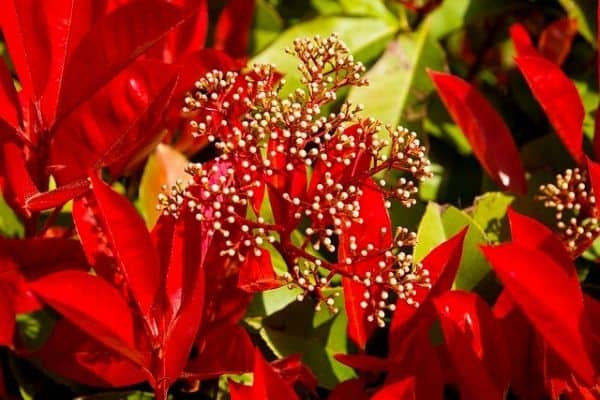
Photinias are a part of the same plant family as roses and they’re also related to apple trees.
Photinia plants have evergreen foliage that starts out a beautiful bright red before turning green.
They get their name from the Greek word photeinos, which means shiny. [1]
If you have a small garden and you’d like a fast growing, colorful hedge then you should definitely consider planting photinias.
Photinia varieties
Some of the most popular photinia varieties include:
Photinia Red Robin – beautiful red foliage and ideal for a privacy hedge.
Photinia glabra ‘Rubens’ – grows up to 2 metres tall and a great choice for a small hedge.
Photinia Superhedge – cold tolerant and ideal for a dense hedge.
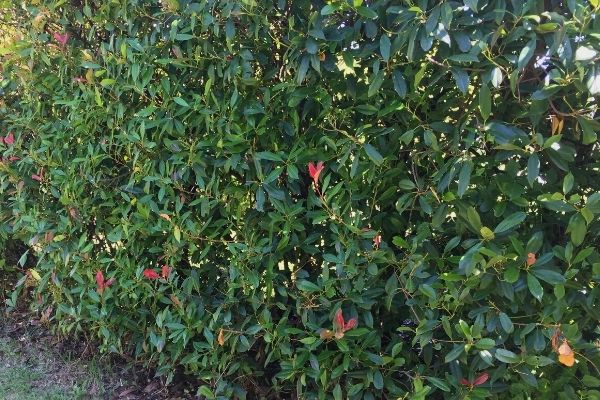
HOW TO GROW PHOTINIA PLANTS
Climate
Photinias are native to Asia, but they grow well in most areas and will tolerate a wide range of temperatures. They’re also frost hardy.
Soil
Photinias will grow well in most soil types but they grow best in well-drained soil that is rich in organic matter.
Prepare the soil before planting by digging some compost into the soil.
Sunlight
Photinia plants grow well in full sun or partial shade.
Height
Photinias can grow up to 20 feet (6 metres) tall, but regular pruning will ensure that they don’t get too tall.

Spacing
Photinias can grow up to 3 to 6 feet (1 to 2 metres) wide, depending on the variety, so if you want a dense privacy hedge it’s best to space the plants about 2 to 3 feet (60 to 90 cm) apart.
Water
Photinias are fairly drought tolerant and low maintenance once they’re established but young plants will need regular watering for the first year or two, especially during hot, dry weather.
Fertilizer
Add a slow release fertilizer once a year and apply a thick layer of mulch around the plants to help the soil retain moisture and reduce weed growth.
Pruning
It’s best to prune photinias twice yearly to help create a thick dense hedge.
I like to give my photinia hedge a trim in late spring after flowering and again in early fall to cut back some of the new growth and keep the hedge tidy.
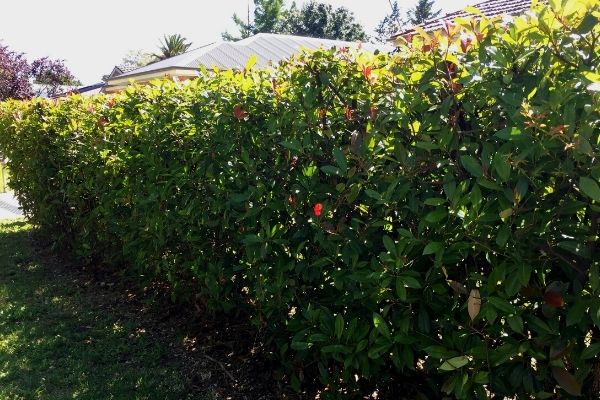
Pests & Diseases
Photinia plants are hardy and fairly low maintenance but they can be affected by powdery mildew and leaf spot, which is a type of fungus that thrives in damp conditions.
Check the plants regularly and if you see any leaves that are affected by fungal diseases you’ll need to prune back any affected branches and treat the plant with a fungicide.
Photinias can also be affected by aphids and weevils but they can be easily eliminated with a natural insecticidal spray.
Propagating photinias
Photinias can be propagated by taking cuttings during the summer.
Take a few cuttings that are about 3 to 4 inches (8 to 10 cm) in length and cut just below a leaf.
Remove the leaves from the bottom half of the cutting and dip the cutting into rooting hormone powder or gel and plant them in a container filled with perlite, vermiculite or sand.
Cover the container with a plastic bag and place it in a brightly lit spot that is out of direct sunlight.
Check the cuttings every week or two to ensure that the soil is still moist.
After a few months you can move the cuttings to a bigger container or transfer them out to the garden to create a new photinia hedge.
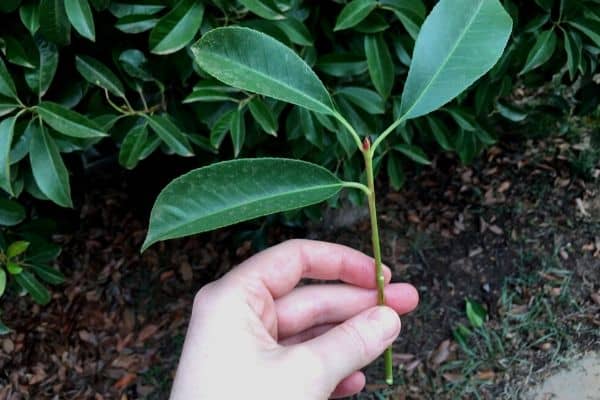
Common questions
How fast do photinia plants grow?
Photinias can grow 12 inches (30 cm) or more each year depending on how much sun and water is available to the plants.
Are photinias frost resistant?
Photinias are frost tolerant so they’re ideal for areas with cold winter temperatures.
My photinia hedge is doing well after 20 years of light frosts during winter, occasional snow and overnight winter temperatures of 23 °F (-5 °C) without any damage to the plants.
Can photinias be planted in pots?
Yes, photinia plants can be grown in large containers with well draining soil.
Potted photinias are ideal for sunny decks, balconies, courtyards and small gardens.

So there are my tips for growing a beautiful red photinia hedge for backyard color and privacy.
With the right care your photinia hedge will be a focal point in the garden for many years to come.
RELATED ARTICLES
Have you tried growing photinias in your garden? Let me know in the comments below.
Are you on Pinterest? I have boards dedicated to Home Gardening and Gardening Tips that you may enjoy. You can also find me on Facebook.

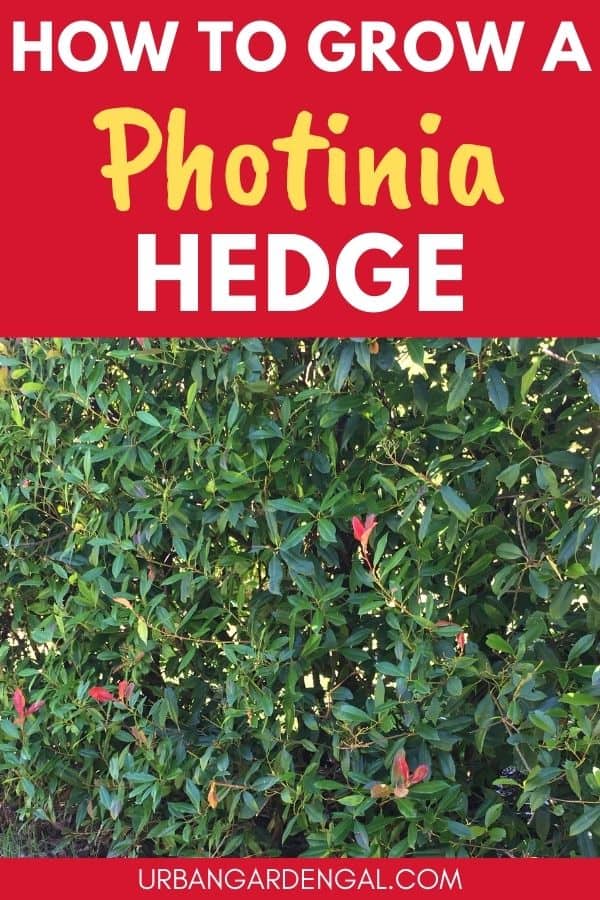




I have a Photinia twenty years old. Height: over 12 feet. Dominates the house. Leaf litter now a problem…..
Nowhere can I find someone to tell me whether I really can lop off about four or five feet without serious damage to the tree.
Pruning hints always refer to HEDGES !
Any ideas: very grateful.